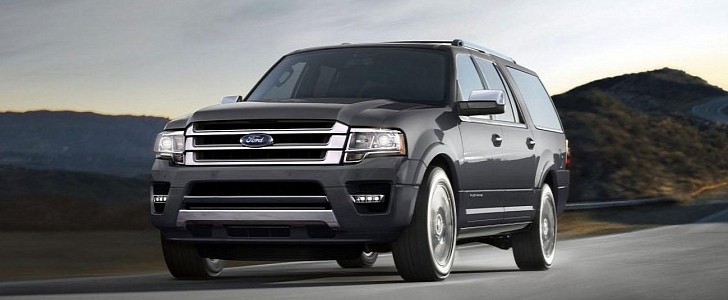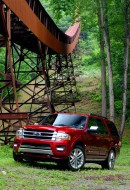The 2015 to 2017 model year Ford Expedition and its Lincoln Navigator twin are called back to the tune of 198,482 units. The suspect population is split between 163,253 Expeditions and 35,229 Navigators.
Subject vehicles were manufactured between January 2014 and June 2017 with front blower motor assemblies that may experience inoperative fans. Certain owners have reported a burning smell and smoke coming from the instrument panel vents with the engine turned on. The subject front blower motor assembly bears part number CL14-19846-AA, and the supplier is listed in the attached recall report as Detroit Thermal Systems.
Interior fires originating in the vicinity of the front blower motor were brought to Ford’s attention back in October 2020. The National Highway Traffic Safety Administration presented the Dearborn-based automaker with five blower-related complaints received from owners of MY16 and MY17 vehicles. Two reports allege intermittent or inoperative blower operation, one alleges melted wiring, and two allege fire under the dash.
The Critical Concern Review Group identified a handful more interior fire allegations, spanning the 2015 through 2017 model years. Ford obtained parts from two fire compliant vehicles in May 2021, analyzing them with the aforementioned supplier. One part indicated a shorted brush, but Ford and Detroit Thermal Systems determined this evidence as inconclusive.
Ford’s engineering department theorized that a mispositioned blower motor brush holder spring may cause an internal short or localized heating of the brush spring or holder. It’s believed that when a fire initiates on the blower motor, it does so at the positive brush holder location. The VBC would remain operational and there would be no signs of an overheated relay.
Detroit Thermal Systems didn’t perform any substantial changes in the blower motor’s material throughout the model years relative to this investigation. Ford still hasn’t identified the root cause of this condition, yet engineers believe that we’re dealing with an internal short or localized heating of the brush spring or holder. In any case, Ford acknowledged that it has to replace a truckload of suspect blower motors. Owner notification will begin on September 12th and finish on the 16th.
Interior fires originating in the vicinity of the front blower motor were brought to Ford’s attention back in October 2020. The National Highway Traffic Safety Administration presented the Dearborn-based automaker with five blower-related complaints received from owners of MY16 and MY17 vehicles. Two reports allege intermittent or inoperative blower operation, one alleges melted wiring, and two allege fire under the dash.
The Critical Concern Review Group identified a handful more interior fire allegations, spanning the 2015 through 2017 model years. Ford obtained parts from two fire compliant vehicles in May 2021, analyzing them with the aforementioned supplier. One part indicated a shorted brush, but Ford and Detroit Thermal Systems determined this evidence as inconclusive.
Ford’s engineering department theorized that a mispositioned blower motor brush holder spring may cause an internal short or localized heating of the brush spring or holder. It’s believed that when a fire initiates on the blower motor, it does so at the positive brush holder location. The VBC would remain operational and there would be no signs of an overheated relay.
Detroit Thermal Systems didn’t perform any substantial changes in the blower motor’s material throughout the model years relative to this investigation. Ford still hasn’t identified the root cause of this condition, yet engineers believe that we’re dealing with an internal short or localized heating of the brush spring or holder. In any case, Ford acknowledged that it has to replace a truckload of suspect blower motors. Owner notification will begin on September 12th and finish on the 16th.
















